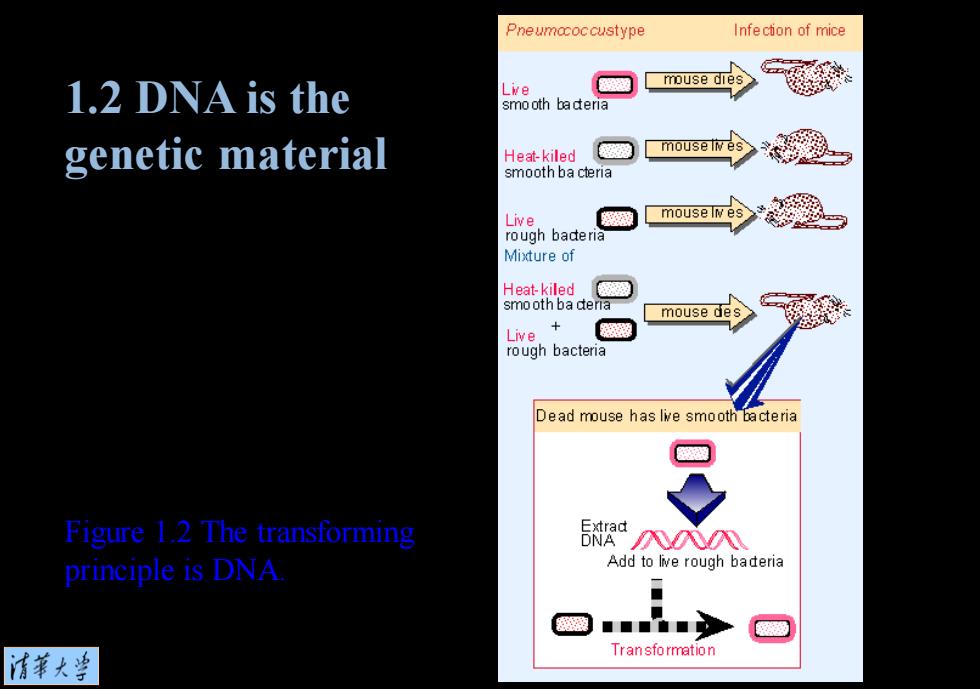
Pneumacoccustype Infe ction of mice Lve mouse dies 1.2 DNA is the smo oth baderia genetic material Heat-kiled mouse liv es smooth ba cteria Live mouse lN es rough baderia Mixture of Heat-kiled smo oth ba deria mouse des Live × rough bacteria Dead mouse has lve smooth bacteria Figure 1.2 The transforming “八入N principle is DNA Add to Ive rough baderia ■ 深■■ Transformation 清菜大当
Figure 1.2 The transforming principle is DNA. 1.2 DNA is the genetic material
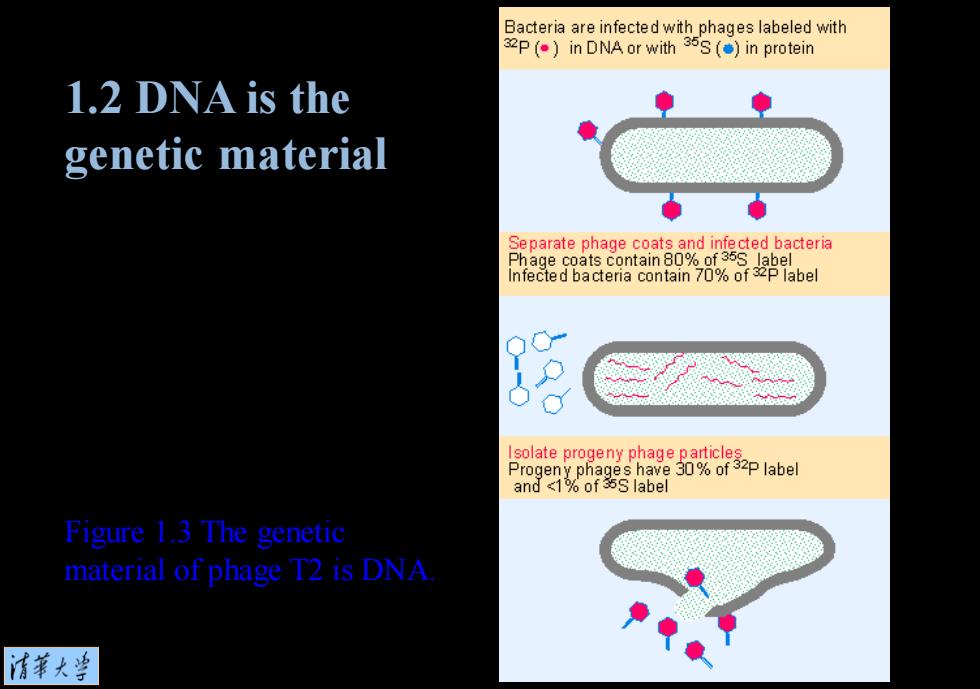
Bacteria are infected with phages labeled with 32P()in DNA or with 35S (in protein 1.2 DNA is the genetic material Separate phage coats and infected bacteria Phage coats contain 80%of 355 label Infected bacteria contain 70%of 32P label Progelbel and <1%of 35S label Figure 1.3 The genetic material of phage T2 is DNA 清菜大当
Figure 1.3 The genetic material of phage T2 is DNA. 1.2 DNA is the genetic material
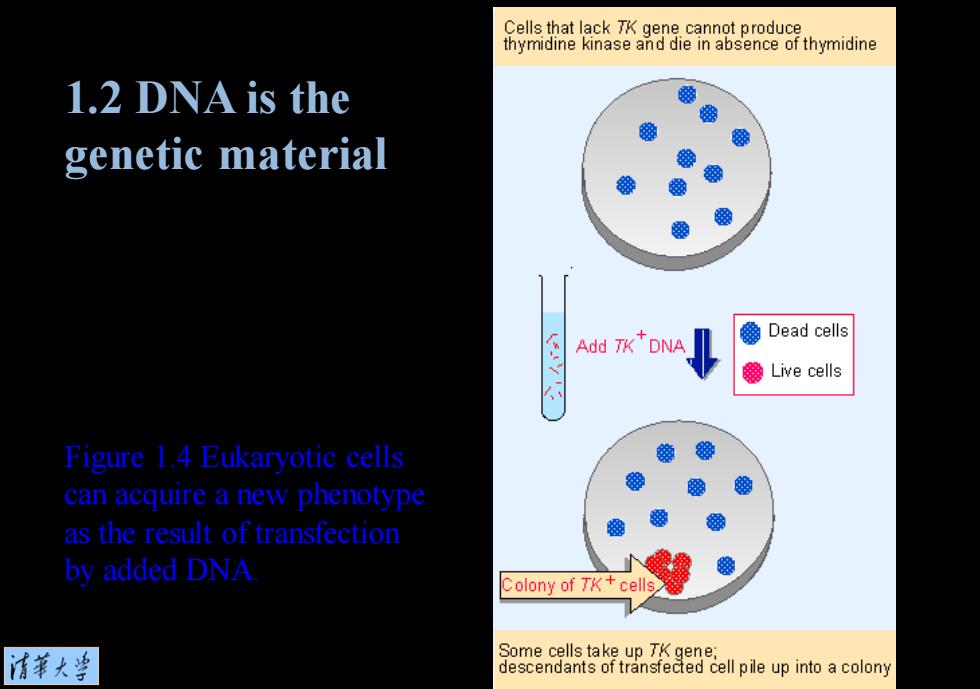
Cells that lack TK gene cannot produce thymidine kinase and die in absence of thymidine 1.2 DNA is the 密 密 象 genetic material 象 象 象 Add TKDNA Dead cells Live cells Figure 1.4 Eukaryotic cells 能 卷 参 can acquire a new phenotype 验 as the result of transfection by added DNA Colony of TK+cells 清菜大当 Some cells take up TK gene; descendants of transfedted cell pile up into a colony
Figure 1.4 Eukaryotic cells can acquire a new phenotype as the result of transfection by added DNA. 1.2 DNA is the genetic material
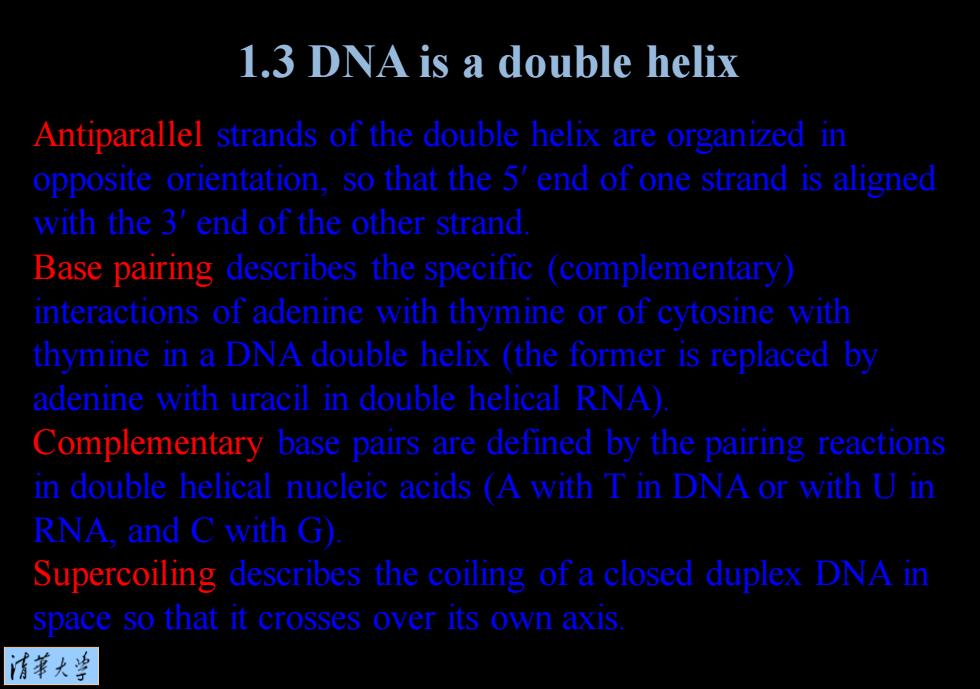
1.3 DNA is a double helix Antiparallel strands of the double helix are organized in opposite orientation,so that the 5'end of one strand is aligned with the 3'end of the other strand Base pairing describes the specific (complementary interactions of adenine with thymine or of cytosine with thymine in a DNA double helix (the former is replaced by adenine with uracil in double helical RNA) Complementary base pairs are defined by the pairing reactions in double helical nucleic acids (A with T in DNA or with U in RNA.and C with G】 Supercoiling describes the coiling of a closed duplex DNA in space so that it crosses over its own axis. 清菜大当
Antiparallel strands of the double helix are organized in opposite orientation, so that the 5′ end of one strand is aligned with the 3′ end of the other strand. Base pairing describes the specific (complementary) interactions of adenine with thymine or of cytosine with thymine in a DNA double helix (the former is replaced by adenine with uracil in double helical RNA). Complementary base pairs are defined by the pairing reactions in double helical nucleic acids (A with T in DNA or with U in RNA, and C with G). Supercoiling describes the coiling of a closed duplex DNA in space so that it crosses over its own axis. 1.3 DNA is a double helix
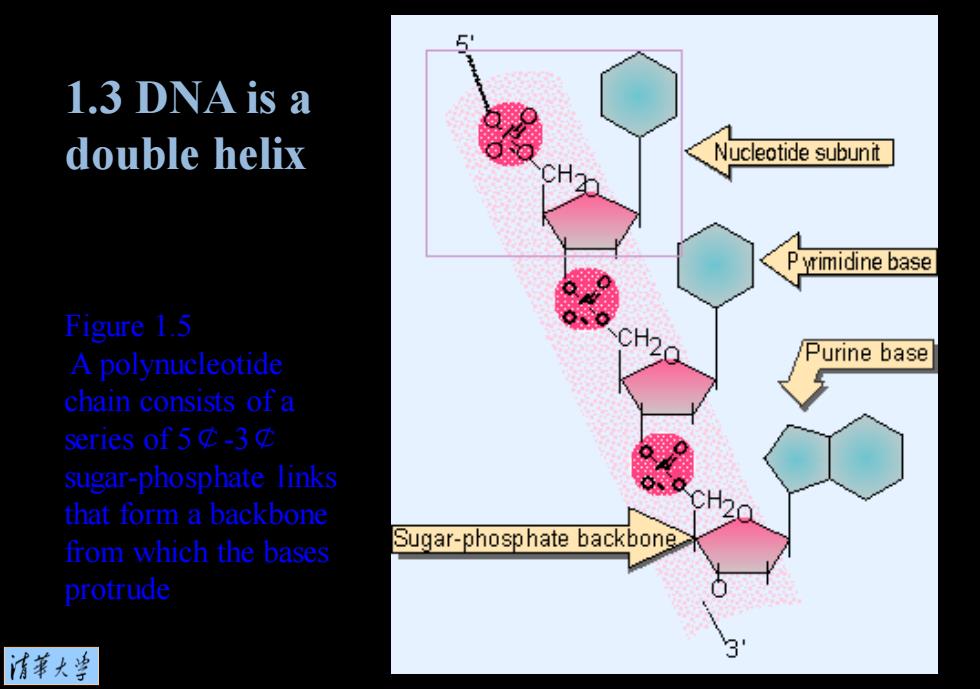
5 1.3 DNA is a double helix Nucleotide subunit P yrimidine base F1gure【.5 A polynucleotide Purine base chain consists of a series of 5 C-3c sugar-phosphate links that form a backbone from which the bases Sugar-phosphate backbone protrude 清菜大当 3
Figure 1.5 A polynucleotide chain consists of a series of 5¢-3¢ sugar-phosphate links that form a backbone from which the bases protrude 1.3 DNA is a double helix